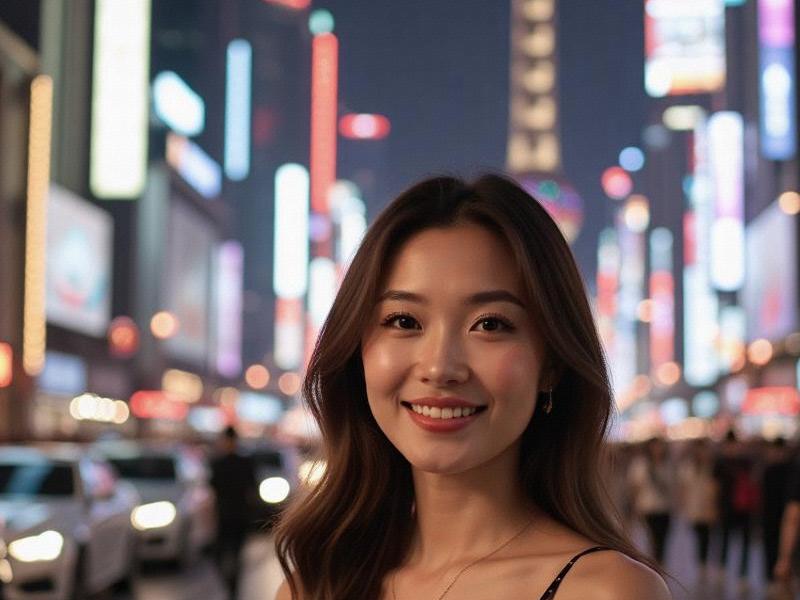The Shanghai Modern Woman: Redefining Femininity in China's Global Metropolis
⏱ 2025-05-25 14:41 🔖 阿拉爱上海娱乐论坛
📢0℃

The Shanghai Woman Phenomenon
On a crisp autumn morning in Shanghai's Xintiandi district, investment banker Vivian Wu walks briskly in her tailored qipao-inspired dress and designer heels - embodying the unique fusion of East and West that characterizes Shanghai's modern women. This scene repeats daily across China's most cosmopolitan city, where local women have developed a globally recognized archetype of urban femininity.
Historical Evolution
The development of Shanghai's female identity:
- 1920s-40s: "Modern Girls" of Republican era
- 1950s-70s: Gender-neutral socialist workers
- 1980s-90s: Re-emergence of femininity
- 2000s-present: Globalized Shanghai woman
"Shanghai women have always been China's avant-garde in gender expression," notes historian Dr. Li Mei. "Today's generation synthesizes traditional virtues with international outlooks."
Contemporary Characteristics
1. Professional Excellence
上海花千坊爱上海 - 38% of senior managers in Shanghai are female (national average: 28%)
- Strong representation in finance, tech, and creative industries
- Entrepreneurial spirit with 42% of startups having female founders
2. Style and Aesthetics
- Fusion fashion blending qipao elements with global trends
- Sophisticated beauty standards emphasizing both elegance and capability
- Average monthly spending on appearance: ¥3,500 (national urban average: ¥1,200)
3. Lifestyle Values
- Marriage age average: 30.2 (national: 27.9)
- 68% prioritize career development before family
- Growing single-by-choice demographic
Cultural Influences
上海水磨外卖工作室 Key shaping factors:
- Shanghai's century of international exposure
- Strong matriarchal traditions in Jiangnan culture
- Educational attainment (42% have bachelor's degrees)
- Exposure to global media and ideas
Economic Impact
Shanghai women's consumer power:
- Control 78% of household spending decisions
- Drive luxury market growth (32% of national sales)
- Key demographic for beauty, fashion, and education sectors
Challenges and Controversies
Ongoing issues:
爱上海 - Work-life balance pressures
- Persistent gender pay gaps (18% disparity)
- Societal expectations vs personal aspirations
- Aging population concerns
Future Trends
Emerging developments:
- Rise of female-led tech startups
- Growing influence in cultural industries
- Changing family structures
- Increasing political participation
As sociologist Professor Zhang Ying observes: "The Shanghai woman represents China's most advanced experiment in modern femininity - neither rejecting tradition nor blindly copying Western models, but creating something distinctly Chinese yet globally relevant."
From the financial towers of Lujiazui to the art galleries of M50, Shanghai's women continue to redefine what it means to be female in modern China, offering fascinating insights into the country's social transformation.
Shanghai and Its Surroundings: A Blend of Tradition and ModernityThe Velvet Rope Revolution: How Shanghai's Clubs Redefined Luxury EntertainmentSilk and Startups: How Shanghai Women Are Writing a New Chapter of Oriental Femininity双面绣:上海的城市褶皱与时空密码(1843-2025)The Latest Developments and Highlights in Shanghai"Beyond Qipao & Cosplay: The New Archetypes of Shanghai Femininity in the Digital Age"Shanghai After Dark: The Reinvention of Luxury Entertainment in China's Global CityShanghai's Premium Entertainment Venues: Redefining Urban Nightlife Culture"格式
- 包含标题、关键词、描述、正文四部分
- 输出为txt格式
3. 专业要求:
- 保持新闻写作专业性
- 符合资深记者视角
- 展现文化深度
- 突出时代变迁特征
以下是为您精心创作的上海女性文化现象深度报道:The Shanghai Sheen: How China's Most Cosmopolitan Women Are Rewriting Beauty Standards

